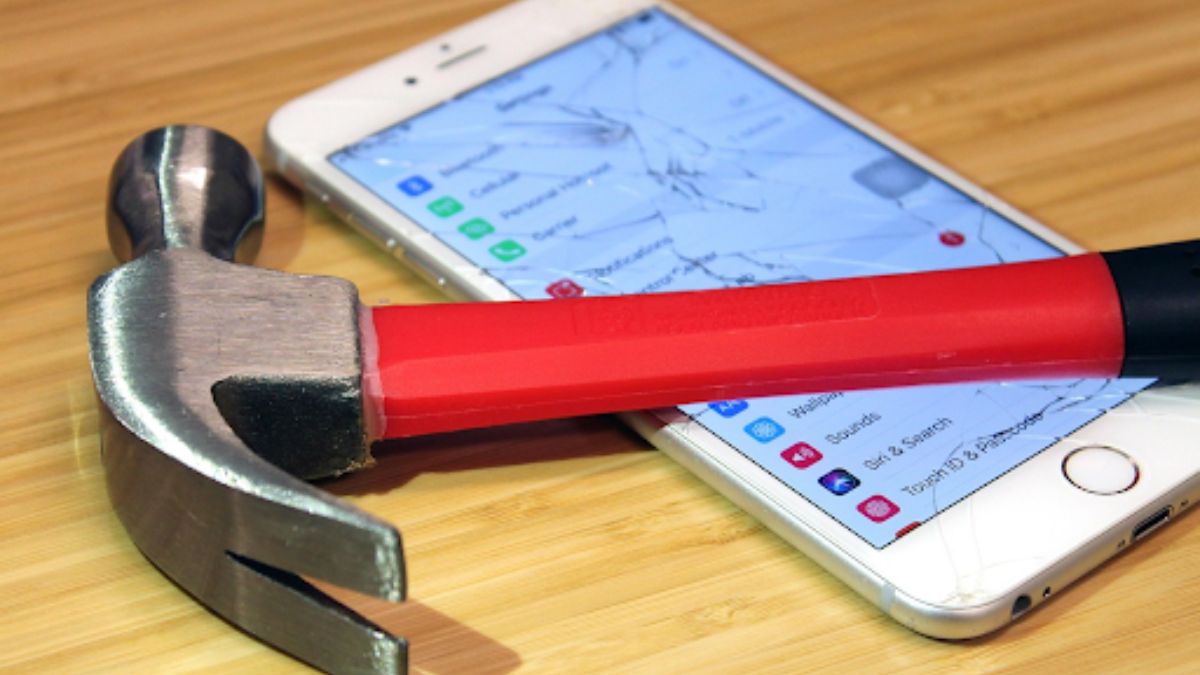TOPIC
Five Critical Factors to Consider Before Getting an iPhone Screen Replacement

Cracked screens create tough choices—discover the hidden costs, data risks, warranty traps, and quality concerns before trusting your iPhone to just any repair shop.
That awful moment when an iPhone slips and smacks the pavement often ends with a spider-webbed screen staring back at you. The panic sets in, followed by frustration. Yet rushing off for the quickest fix might not serve anyone well in the long run.
The Australian market for iPhone screen replacements has expanded dramatically, with repair options popping up everywhere from shopping centres to corporate Apple stores. Quality varies wildly between these choices, and the wrong decision potentially costs far more than the initial repair bill. Worth taking a moment to think it through, really.
1. Replacement Part Quality
The screens themselves differ enormously between repair shops. Most customers notice these differences only when it is too late.
Genuine and high-grade OEM screens deliver better colour accuracy, optimal brightness levels, and responsive touch sensitivity. They typically survive daily use without developing faults. Budget replacement screens might look decent at first glance but often develop touch response issues, strange colour shifts around edges, or dimming problems within months.
Smart questions to ask aren’t limited to price – what matters is what’s actually being installed. Many shops won’t volunteer information about screen quality unless directly asked. Remember this: suspiciously cheap repairs almost always mean corner-cutting on components.
2. Warranty Considerations
This gets complicated for loads of iPhone owners. Screen replacements from non-authorised repair shops can affect warranty protection.
Apple’s warranty guidelines specify that damage resulting from “unauthorised modifications” might invalidate coverage. This creates a situation where unrelated faults occurring after third-party screen work could be rejected for warranty service.
Worth noting, Australian consumer law offers specific protections in this scenario. Repair businesses cannot legally void an entire warranty, and Apple cannot refuse all service simply because of a third-party screen. They can, however, decline repairs for problems reasonably linked to non-Apple parts or service.
For newer iPhone models with active warranties, this risk deserves careful thought before choosing the cheapest option.
3. Data Security Concerns
Few people properly consider what happens to personal data during repairs. Modern iPhones contain entire digital lives – private photos, banking details, message histories, and passwords.
When handing over an unlocked device, consider:
- Will staff need full passcode access?
- What security protocols exist in the workshop?
- How established and trustworthy is the business?
Smaller, less-established repair shops rarely maintain strict data protection standards. Disturbing cases of personal information access during repairs happen more often than reported. Apple stores and authorised service providers typically enforce stringent security measures, including workplace surveillance and staff screening.
Anyone with sensitive work information or personal privacy worries might find the higher price at official repair centres completely justified. Not something most people think about until too late.
4. Secondary Features Affected
Modern iPhone display assemblies contain much more than simple glass. Depending on model year, screens might incorporate:
- Face ID sensor arrays
- Ambient light detection
- Proximity sensing equipment
- True Tone display calibration
Substandard repairs frequently fail to properly reconnect or calibrate these components. Countless customers discover after budget repairs that Face ID mysteriously stopped working, automatic brightness adjustment disappeared, or True Tone functionality vanished permanently.
Recent iPhone generations have grown increasingly sophisticated, making proper repairs technically challenging. Several features require specialised calibration tools exclusive to Apple and authorised service partners. Before settling on any repair option, specifically enquire which features will remain fully operational afterwards.
5. Long-term Financial Impact
The cheapest immediate fix rarely proves most economical across time. Poorly executed screen replacements might save $70-120 initially but potentially cost more through the long run:
- Accelerated battery depletion (low-quality screens often draw more power)
- Inevitable second replacement when cheap components fail
- Collateral damage to other phone components from shoddy workmanship
- Reduced resale opportunities with non-standard parts
Spending slightly more upfront typically saves money and hassle down the track. The peace of mind knowing repairs meet proper standards carries its own value.
Perhaps worth viewing screen damage as an opportunity. Some Aussies use cracked screens as the nudge to upgrade, particularly with older models. Comparing repair costs against putting those dollars toward a newer device with improved features, better battery performance, and years of software support ahead makes practical sense.
Making a Smart Choice
Ultimately, iPhone screen replacement decisions balance cost against quality, security, and convenience factors. For premium late-model devices, the security and reliability of authorised repairs likely justify higher prices. For older models, reputable independent shops might offer reasonable middle-ground solutions.
Whatever the decision, avoid rushing toward the cheapest quote without weighing these considerations. Hasty choices to save a few dollars potentially result in not just financial regrets, but compromised data, lost functionality, or persistent device problems.
Many reputable repair shops throughout Australia now offer mobile services—technicians who travel to homes or workplaces. This convenience factor weighs heavily for busy professionals unable to surrender their devices for hours. Additionally, some repair businesses provide temporary replacement phones during longer repairs, worth asking about when comparing options.
Take time researching local repair options, read genuine customer feedback, and choose with all factors in mind. Both wallet and iPhone will appreciate thoughtful consideration rather than panic decisions. Remember that screen damage, while frustrating, rarely means permanent device failure—just an opportunity to make informed choices about technology investments.
TOPIC
Nidixfun Uncovered: What Makes This Blog a Must-Read?

Introduction to Nidixfun
Welcome to the vibrant world of Nidixfun, where curiosity meets creativity. If you’re on the hunt for fresh perspectives and engaging content that resonates, you’ve landed in the right spot. This blog isn’t just another collection of posts; it’s a dynamic platform bursting with ideas, insights, and inspiration. Whether you’re looking to explore new topics or connect with like-minded individuals, Nidixfun offers something unique for everyone. Get ready to uncover what makes this blog a must-read!
The Vision and Mission of Nidixfun
At the heart of Nidixfun lies a clear vision: to inspire and empower readers through engaging content. This blog aims to be a beacon for those seeking fresh ideas, entertainment, and knowledge in various fields.
Nidixfun’s mission is rooted in fostering creativity and curiosity. It strives to present diverse topics that resonate with a wide audience. Whether it’s lifestyle tips, travel adventures, or tech innovations, each piece invites exploration.
The team behind Nidixfun believes in the power of storytelling. They understand that well-crafted narratives can spark conversations and connect people from all walks of life.
By prioritizing authenticity and originality, Nidixfun stands out as an inclusive platform where every reader feels welcome to join the dialogue. Embracing this ethos ensures that there is always something valuable waiting on its pages for everyone who visits.
Unique Content and Topics Covered by Nidixfun
Nidixfun stands out with its diverse range of unique content. The blog covers everything from lifestyle tips to tech trends, ensuring there’s something for everyone.
Readers can dive into in-depth articles on wellness and personal development. Each piece is crafted to inspire and motivate readers to take action.
The blog also explores creativity through DIY projects and artistic endeavors. This encourages visitors to unleash their inner artist.
Additionally, Nidixfun keeps up with the latest in entertainment. Movie reviews, book recommendations, and music charts make it a go-to source for pop culture enthusiasts.
Foodies will find delightful recipes that are easy to follow yet packed with flavor. Each recipe reflects a commitment to deliciousness without being overly complicated.
With such an array of topics covered, there’s never a dull moment at Nidixfun. Every visit promises fresh insights waiting just around the corner.
Engaging Writing Style and Format
Nidixfun stands out with its engaging writing style, which feels like a conversation rather than a lecture. The tone is friendly and approachable, inviting readers to dive into the content without any pressure.
Short paragraphs enhance readability. Each section tackles specific points clearly and concisely, making it easy for anyone to follow along. Bullet points or lists often break up larger chunks of text, providing visual relief while emphasizing key ideas.
Vivid language brings topics to life. Readers can almost visualize stories being told within the pages of Nidixfun. The use of humor and relatable anecdotes adds an extra layer of charm that keeps visitors coming back for more.
Moreover, visual elements complement the words beautifully. Images, infographics, and videos enrich the experience further and make learning enjoyable across various subjects covered on the blog.
Interactive Community and Feedback from Readers
Nidixfun thrives on the power of community. It’s not just a blog; it’s a lively hub where readers become active participants. The platform encourages conversations, making it easy for everyone to share thoughts.
Reader feedback is central to Nidixfun’s growth. Comments and suggestions are embraced with open arms. This creates an engaging dialogue that enriches each post. Readers often inspire new topics, ensuring content remains fresh and relevant.
Polls and surveys invite opinions directly from the audience. This interactive approach fosters connection, allowing contributors to feel valued in shaping the blog’s direction.
Moreover, social media integration amplifies this interaction even further. Followers can easily engage with posts, sparking discussions that extend beyond the articles themselves.
This vibrant exchange not only enhances user experience but builds lasting relationships among like-minded individuals who share similar interests within their diverse explorations at Nidixfun.
Collaborations and Partnerships with Other Blogs and Brands
Nidixfun thrives on collaboration. The blog actively partners with other like-minded platforms and brands to amplify its reach and enrich content.
These collaborations are not just about cross-promotion, but about creating value for readers. Each partnership brings fresh perspectives, innovative ideas, and diverse voices into the mix.
For instance, guest posts from experts offer deeper insights into niche topics that resonate with the audience. This creates a rich tapestry of information that keeps readers engaged.
Moreover, partnerships often lead to exclusive giveaways or joint projects that excite the community. These initiatives foster a sense of belonging among followers while encouraging interaction across various channels.
By working alongside respected blogs and enthusiastic brands, Nidixfun continues to enhance its credibility and relevance in an ever-evolving digital landscape. Readers can expect unique experiences driven by these dynamic alliances.
Conclusion: Why Nidixfun is a Must-Read Blog for Everyone
Nidixfun stands out as a vibrant and engaging blog that caters to a wide audience. Its dedication to providing unique content on various topics ensures there’s something for everyone. Whether you’re looking for insightful articles, entertaining stories, or practical tips, Nidixfun covers it all.
The vision and mission behind the blog shine through in every post. The creators are committed to delivering quality information while fostering an interactive community where readers feel valued. This sense of connection enhances the overall experience of visiting the site.
The writing style is another significant aspect that draws readers in. It’s approachable yet informative, making complex topics easy to digest without losing depth. Each article is crafted with care and attention to detail, ensuring you enjoy both reading and learning.
Additionally, Nidixfun encourages feedback from its audience, creating a space where dialogue thrives. Readers can share their thoughts and contribute ideas that shape future content—this level of interaction builds loyalty among followers.
Collaborations with other blogs and brands further enrich the content offered on Nidixfun. These partnerships not only broaden perspectives but also introduce exciting new voices within its pages.
With so much to offer—from diverse topics and relatable writing styles to an engaged community—Nidixfun truly deserves its spot on your must-read list. Dive into this blog today; there’s no doubt you’ll find value in exploring what it has to say!
TOPIC
Why ‘BugsIsDead’ Should Be Your New Software Motto

Introduction to the concept of ‘BugsIsDead’
Welcome to the future of software development, where the motto “BugsIsDead” reigns supreme. Imagine a world where applications run smoothly, user frustrations are nonexistent, and developers take pride in delivering flawless code. Sounds like a dream, right? But this isn’t just wishful thinking; it’s a movement that more and more tech companies are embracing.
In an age where software is integral to our daily lives, buggy applications can lead to lost revenue and tarnished reputations. By adopting the mantra “BugsIsDead,” developers commit to creating cleaner, bug-free solutions that enhance user experiences and foster loyalty. Let’s dive into why this mindset should be at the forefront of your software development process!
The problem with buggy software
Buggy software can be a developer’s nightmare. It disrupts functionality and leads to user frustration. When users encounter glitches, their trust in the product diminishes.
Every bug represents a potential loss of data or security risks. This reality puts immense pressure on developers to not only find but also fix issues promptly.
The cost of buggy software goes beyond mere dollars; it affects brand reputation. Users are quick to abandon products that don’t work seamlessly, leading to declining retention rates.
Moreover, unresolved bugs consume valuable time and resources during development cycles. Teams may spend countless hours troubleshooting instead of innovating new features or improving user experience.
These problems highlight the importance of prioritizing quality assurance. A commitment to delivering clean code should be at the forefront of every development process for sustained success in today’s competitive market.
The benefits of prioritizing bug-free code
Prioritizing bug-free code transforms the user experience. When software runs smoothly, users engage more deeply and enjoy their interactions. This leads to increased satisfaction and loyalty.
Fewer bugs mean reduced maintenance costs. Developers can focus on adding new features rather than constantly fixing issues. A stable product encourages innovation instead of putting out fires.
Quality assurance becomes a cornerstone of development. Teams that prioritize clean code foster a culture of excellence, attracting top talent who value craftsmanship in coding.
Additionally, businesses benefit from enhanced reputation. Word spreads quickly in today’s digital age; happy customers become brand advocates, driving organic growth through positive reviews and referrals.
Investing time upfront for quality pays off down the line. Bug-free solutions streamline workflows, minimize disruptions, and ultimately lead to better business outcomes across the board.
How ‘BugsIsDead’ can improve user satisfaction and retention
Embracing the ‘BugsIsDead’ motto can transform user experiences. When software runs smoothly, users feel confident and satisfied. They appreciate seamless interactions that enhance their productivity.
Bug-free applications foster trust. Users are more likely to stick around when they know their tools won’t fail them during critical moments. This reliability directly impacts retention rates.
Additionally, a focus on quality encourages positive word-of-mouth marketing. Happy users share their experiences with friends and colleagues, drawing in new customers who seek dependable solutions.
By prioritizing bug-free code, companies create an environment where innovation thrives. Developers can explore new features without the fear of introducing bugs that disrupt existing functionalities.
Adopting ‘BugsIsDead’ aligns company values with customer expectations, leading to stronger relationships and loyal user bases willing to advocate for your brand.
Real-life examples of companies using ‘BugsIsDead’ successfully
Several tech giants have embraced the ‘BugsIsDead’ philosophy, achieving remarkable results. Take Microsoft, for instance. Their commitment to rigorous testing has reduced software glitches significantly in recent releases, leading to smoother user experiences.
Another great example is GitHub. By emphasizing code quality and continuous integration, they’ve cultivated a robust environment where bugs are swiftly identified and resolved. This focus ensures developers can collaborate without interruptions or unforeseen issues.
Shopify also stands out with its proactive stance on bug fixes. They prioritize feedback from merchants to identify vulnerabilities quickly, reinforcing customer trust and satisfaction.
These companies demonstrate that adopting the ‘BugsIsDead’ mindset not only safeguards their reputation but enhances overall performance as well. Each of these organizations showcases how prioritizing bug-free development fosters innovation while keeping users happy and engaged.
Implementing ‘BugsIsDead’ in your software development process
To implement ‘BugsIsDead’ in your software development process, start by embracing a culture of quality. Make it clear that every team member is responsible for maintaining high standards.
Incorporate automated testing into your workflow. This helps catch bugs early and ensures smooth releases. Continuous integration systems can automate this process, reducing human error.
Encourage regular code reviews among peers. Fresh eyes often spot issues that may slip past the original developer.
Adopt agile methodologies to promote flexibility and responsiveness to feedback. This allows for rapid iterations while focusing on bug prevention.
Invest in training sessions focused on best practices for writing clean, efficient code. A knowledgeable team is less likely to introduce defects from the get-go.
By embedding these strategies into daily routines, you’ll create an environment where ‘BugsIsDead’ thrives organically within your projects.
Conclusion and call to action for developers to adopt this motto
Adopting the motto ‘BugsIsDead’ can be a game changer for your software development process. By prioritizing bug-free code, you not only enhance user satisfaction but also drive customer retention and loyalty. Embracing this mindset means that every line of code matters; it encourages developers to take extra steps in testing and quality assurance.
Consider how companies like Apple or Microsoft have succeeded by focusing on seamless user experiences. Their commitment to eliminating bugs has built trust with their users, solidifying their positions as industry leaders. By following suit, smaller businesses can create equally impressive products that stand out in a crowded market.
It’s time for developers everywhere to embrace ‘BugsIsDead.’ Start implementing rigorous testing protocols and foster an environment where writing clean code is paramount. Make it part of your culture, instill pride in delivering flawless software, and watch as your projects flourish.
Join the movement toward bug-free coding today! Remember: when bugs are dead, innovation thrives.
TOPIC
A Day in the Life of Marcus Hamberg: Balancing Creativity and Business

Introduction to Marcus Hamberg
Meet Marcus Hamberg, a creative powerhouse with an entrepreneurial spirit. He embodies the perfect blend of artistry and business savvy. With a mind constantly buzzing with ideas, he transforms inspiration into tangible success. But how does he manage to balance his artistic pursuits while steering his business towards growth? Join us as we dive into a day in the life of Marcus Hamberg—a journey filled with creativity, strategy, and the challenges that come with being a multifaceted entrepreneur. Discover what drives him and learn valuable insights along the way.
The Creative Mindset: How Marcus Stays Inspired
Marcus Hamberg thrives on inspiration. For him, creativity isn’t just a task; it’s a way of life. He believes that surrounding himself with diverse experiences fuels his imagination.
Every morning starts with a ritual. Marcus dedicates time to read books across various genres—fiction, non-fiction, and poetry. This broadens his perspective and ignites fresh ideas.
Nature plays an essential role too. A simple walk in the park can transform his mindset, allowing thoughts to flow freely without distractions.
Collaboration is another key element for Marcus. Engaging with fellow creatives sparks new concepts and reinforces existing ones.
He maintains an idea journal where he jots down thoughts anytime they strike him. This habit ensures nothing slips away unnoticed while keeping his creative engine running smoothly.
Managing a Business: Marcus’ Daily Routine
Marcus Hamberg starts his day early. The morning is filled with quiet moments, allowing him to gather his thoughts. A strong cup of coffee fuels his creativity as he reviews daily goals.
After a quick breakfast, he dives into emails and messages. This sets the tone for the day ahead. He prioritizes tasks based on urgency and importance, ensuring nothing falls through the cracks.
Mid-morning often finds Marcus brainstorming new ideas or collaborating with team members. These sessions spark innovation and keep everyone aligned with the vision.
Lunchtime offers a much-needed break but also serves as an opportunity for networking. Whether it’s meeting clients or connecting with fellow creatives, these interactions inspire fresh perspectives.
The afternoon shifts focus toward project management and financial oversight. Balancing numbers while nurturing creativity requires skill—a challenge Marcus embraces wholeheartedly each day.
Balancing Creativity and Finances
Marcus Hamberg understands the delicate dance between creativity and finances. Artists often see financial constraints as a limitation, but Marcus flips that notion on its head. He views budgeting as a canvas for innovation.
By setting clear financial goals, he creates space for his artistic pursuits without compromising quality. This strategy helps him recognize when to invest in materials or tools that enhance his work.
He also incorporates regular assessments of both income and expenses into his routine. This keeps creative projects sustainable while allowing room for spontaneous ideas to flourish.
Balancing these two aspects is not just about numbers; it’s about cultivating an environment where creativity thrives alongside fiscal responsibility. Each project becomes an opportunity to explore new avenues while staying grounded in financial reality, proving that art and commerce can coexist harmoniously.
Challenges Faced by Creative Entrepreneurs
Creative entrepreneurs often navigate a complex landscape filled with unique challenges. One major hurdle is the struggle to maintain inspiration while managing business operations. The pressure of deadlines can stifle creativity, making it hard to brainstorm fresh ideas.
Another challenge is balancing artistic vision with market demands. Many creatives wrestle with compromising their ideals for financial stability. This conflict can lead to frustration and burnout.
Isolation is also a common issue among creative professionals. Working solo often means lacking support systems that other types of businesses might have, resulting in feelings of loneliness and self-doubt.
Additionally, fluctuating income presents significant stress for creative entrepreneurs. They must learn how to manage finances effectively during lean times while still investing in their craft.
Navigating these hurdles requires resilience and adaptability—a true test of both creativity and business acumen.
Tips for Finding Balance and Success as a Creative Professional
Finding balance as a creative professional can be challenging, yet rewarding. Start by setting clear boundaries between work and personal time. This helps maintain focus and prevents burnout.
Embrace routine but allow for flexibility. Schedule dedicated time for brainstorming or creating while leaving room for spontaneity when inspiration strikes.
Networking plays a crucial role in growth. Connect with fellow creatives to exchange ideas and support one another.
Also, prioritize self-care. Engaging in activities outside of your craft rejuvenates the mind and sparks creativity.
Track progress regularly. Celebrate small wins to stay motivated, ensuring that your journey remains fulfilling rather than overwhelming. Balancing these elements fosters both creativity and business success without sacrificing either side of your passion-driven career.
Conclusion
Marcus Hamberg exemplifies the delicate balance between creativity and business acumen. His day-to-day life showcases a commitment to inspiration while navigating the complexities of running a successful venture. By prioritizing both creative pursuits and financial responsibilities, he sets an example for aspiring entrepreneurs in creative fields.
The challenges faced by individuals like Marcus serve as reminders that success doesn’t come easy. Embracing uncertainty and learning from setbacks are crucial components of growth. With dedication, resilience, and effective time management strategies, anyone can carve out their own path in the world of creativity.
As many have learned from Marcus’ journey, achieving harmony between artistic expression and business demands is not only possible but rewarding. Through passion-driven work combined with strategic planning, creatives can thrive both personally and professionally.
-

 TECHNOLOGY5 months ago
TECHNOLOGY5 months agoTop 10 Must-Read Stories from Kristen Archives You Can’t Miss
-

 TECHNOLOGY10 months ago
TECHNOLOGY10 months agoSky Bri Net Worth Revealed: How She Built Her Financial Empire
-

 TOPIC12 months ago
TOPIC12 months agoBasement Renovation Contractors: How They Tackle Structural Issues During Renovations
-

 TOPIC7 months ago
TOPIC7 months ago5 Reasons the //Vital-Mag.Net Blog Dominates Lifestyle
-

 TOPIC5 months ago
TOPIC5 months agoTop 10 Articles from the ://Vital-Mag.net Blog That You Can’t Miss
-

 CRYPTO9 months ago
CRYPTO9 months agoCrypto30x.com Review: Is It the Right Platform for You?
-

 BUSINESS5 months ago
BUSINESS5 months agoTraceLoans Explained What You Need to Know
-

 ENTERTAINMENT2 months ago
ENTERTAINMENT2 months agoNHentai.NEF: Navigating the Popular Hentai Archive with Ease
